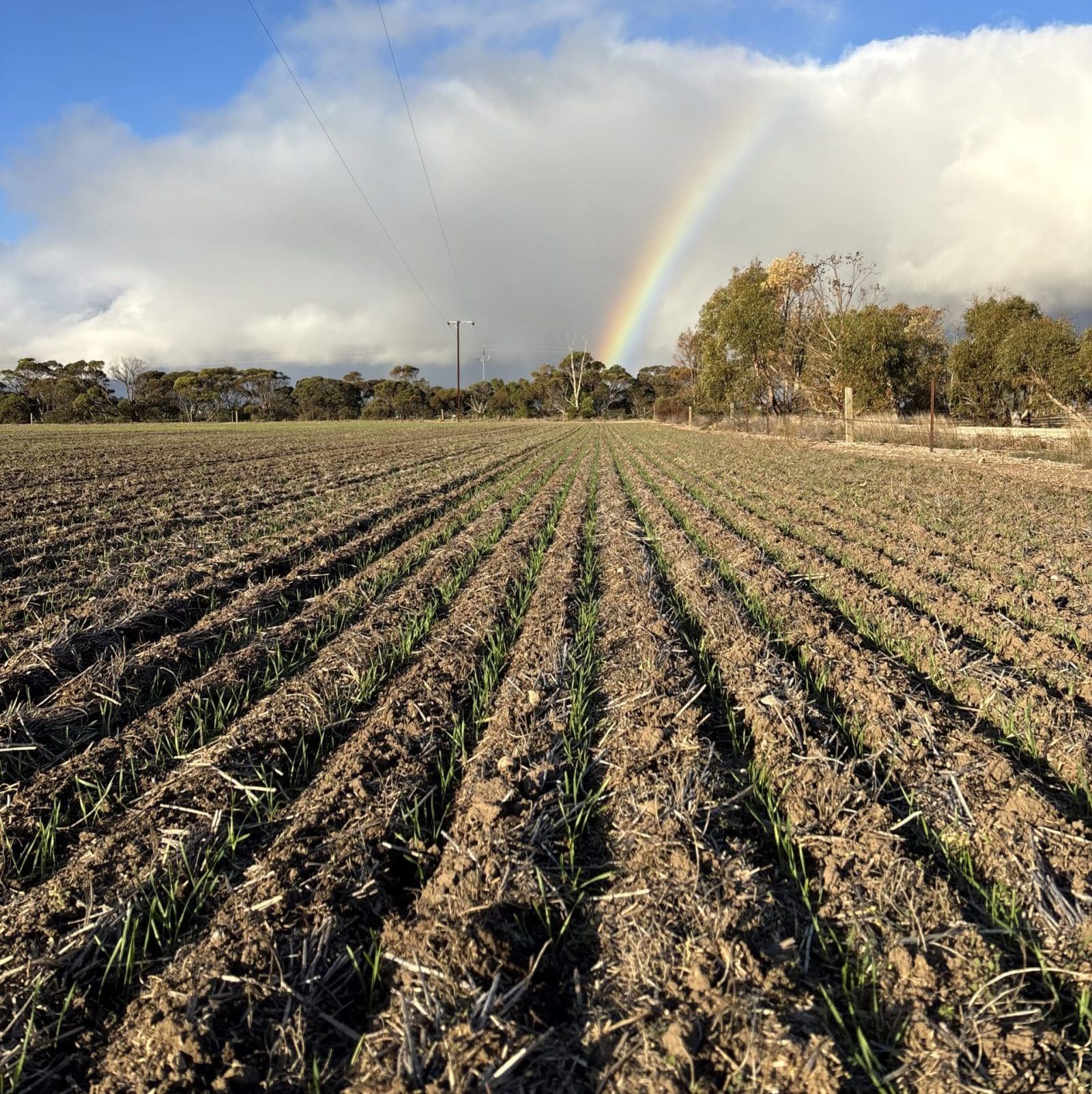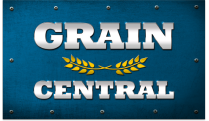
A crop of wheat gets going at Koolywurtie on SA’s Yorke Peninsula. Photo: Crop Smart
AMID ongoing drought-feeding demand, bright prospects for the northern crop and cautious optimism for the south, prices for wheat and barley are largely unchanged this week.
Growers continue to hold, with those in the south unlikely to advance current-crop or new-crop sales until their season consolidates.
Barley values continue to find support from those looking for grain to supplement hay being fed to dairy and beef cattle and sheep and lambs.
On wheat, bulk demand for nearby Australian cargoes has taken its annual downturn as Northern Hemisphere volume appears.
| Prompt June 19 | Prompt today | New-crop June 19 | New-crop today | |
| Barley Downs | $327 | $332 | $330 Jan | $330 |
| ASW Downs | $343 | $340 | $345 Jan | $347 |
| Sorghum Downs | $352 | $353 | NQ | NQ |
| Barley Mel | $368 | $368 | $360 | $360 |
| ASW Mel | $372 | $368 | $378 | $375 |
Table 1: Indicative prices in Australian dollars per tonne.
Volume thin in north
A mostly dry week in Queensland and northern New South Wales has growers in some districts waiting for more rain before they advance current-crop or new-crop sales.
With crop conditions mostly good to excellent, and yield prospects the same, one trader said consumers were in no hurry to buy.
“There’s no urgency from the consumer; there’s plenty of grain around, and they can sit and wait.”
The weight of carry-out, and the buoyant new-crop prospects, are reflected in the lack of a cliff face between prompt and forward prices.
“There’s no carry in the market – it’s pretty well trading flat.”
Trade sources say consumer bids were around $10/t below where they need to be to prompt grower sales, which are expected to increase in volume from next week, when the new financial year kicks in.
Drought feeding far from over
In the week to 9am today, some cropping regions of south-eastern Australia have had good rain, and others have missed out entirely.
South-west Vic generally got the best of the falls, with 20-40mm.
In SA, handy registrations for the week include: Bordertown 23mm; Clare 13mm; Cleve 16mm; Coulta and Cummins 24mm; Georgetown and Mintaro 19mm; Laura 21mm; Melrose 9mm; Minlaton 22mm, and Wirrabara 15mm.
Much of the SA and Vic Mallee missed the rain, but handy falls in Vic included: Birchip and Woomelang 10mm; Dimboola 27mm; Goroke and Kanagulk 26mm, and Nhill 14mm.
In the southern half of NSW, falls were very patchy, and included: Barellan 17mm; Cootamundra 22mm; Deniliquin 24mm; Lake Cargelligo 14mm, and Temora 21mm.
Short days and cool to cold temperatures are limiting growth in the southern region’s crops and pastures, which are expected to kick along by the second half of August, provided they get enough rain and warmth.
Crops are emerging as showers keep coming in the majority of districts.
“In most areas, we’ve had enough rain to germinate crops,” Wayne Davis of Davis Grain at Jamestown in SA’s Upper North said.
While far from consolidating prospects for SA new crop, rain this month has softened the barley market enough to push some grain into the up-country stockfeed market.
“We ran out of willing sellers in the north six weeks ago, and had to go further south.”
Bulk handlers, and growers with barley warehoused at their sites, are offering barley at around $360-$365/t free on truck.
“There’s a bit of barley being bought by people trying to hang on to their ewes.”
With SA lamb markets showing the kind of strength normally reserved for Vic and NSW, Mr Davis said plenty of people were finishing lambs in confinement pens, mostly on hay and barley.
Severely diminished fodder supplies have growers ready to consider cutting an extra paddock or two for hay if their season cuts out in spring.
At Wagga Wagga, Peters Commodities trader Peter Gerhardy said around 90-95 percent of the region’s crop had germinated.
“We’re good, we’re comfortable, but we’re late; we definitely don’t want a bob-tailed spring.”
Mr Gerhardy said the sales being made by the grower were generally to the drought-feeding market which is expected to last into September, with store lambs as well as breeders and progeny said.
“Stock are definitely worth feeding; people are buying store lambs at $200, putting them on barley…and getting a $350 lamb.”
Grain Central: Get our free news straight to your inbox – Click here

HAVE YOUR SAY